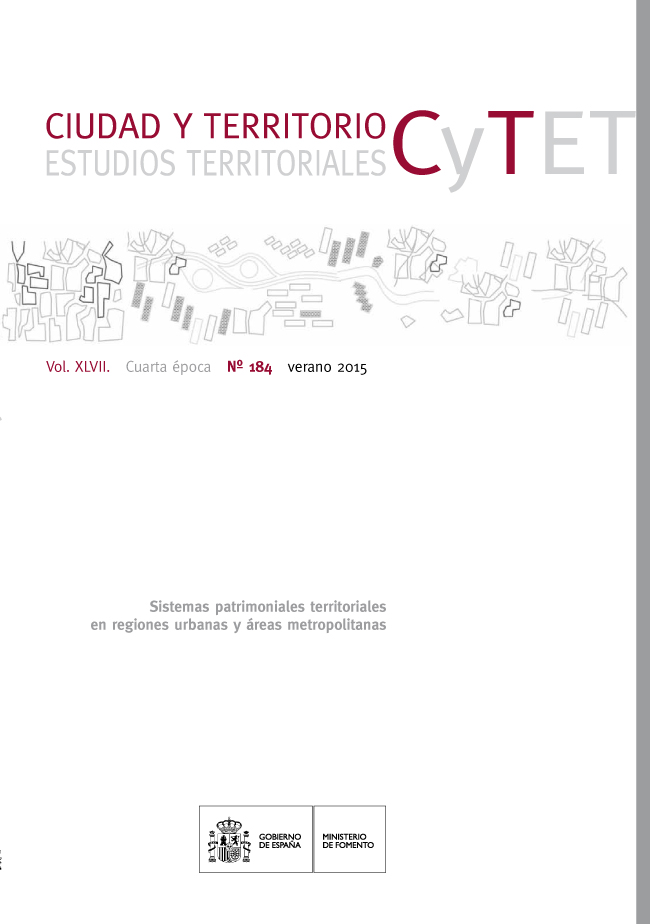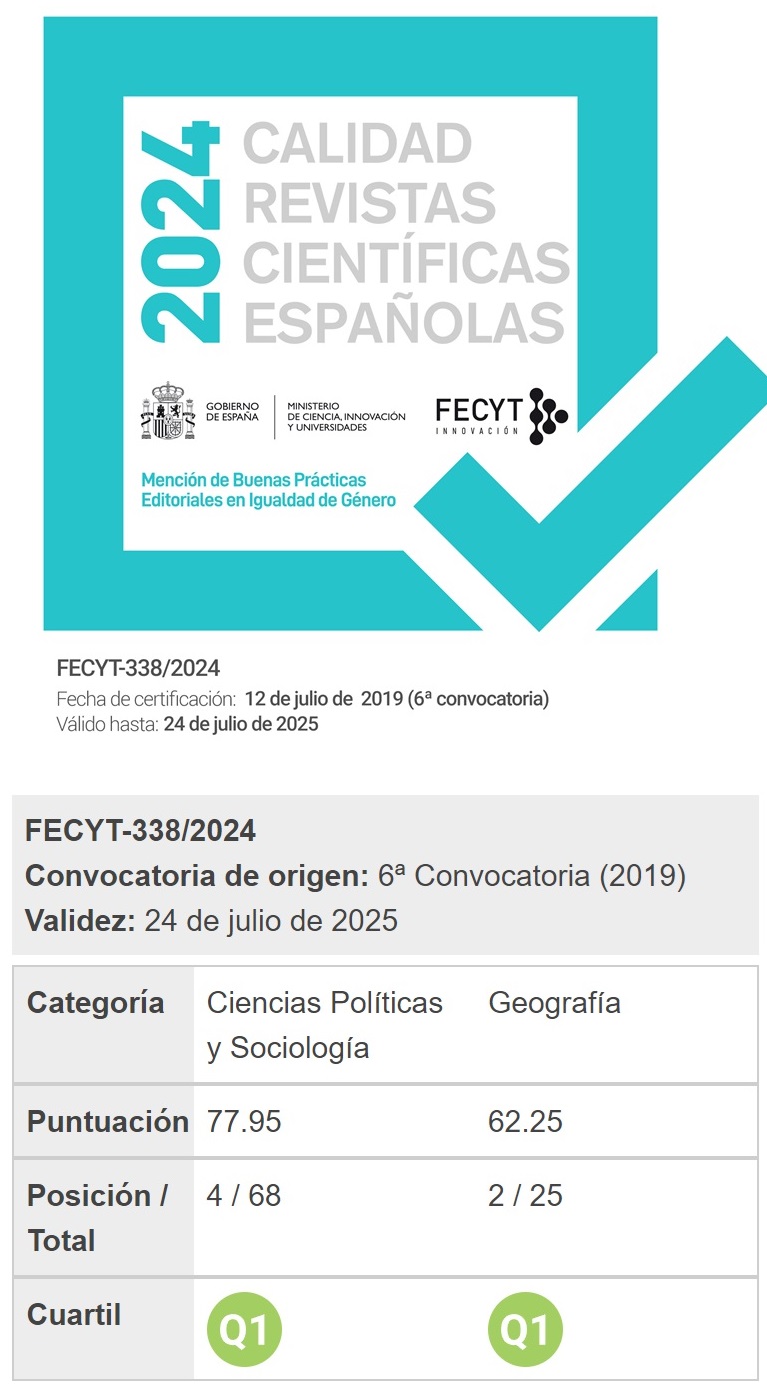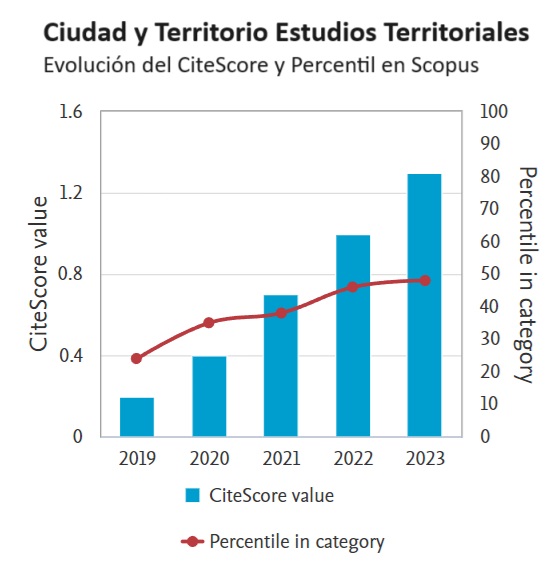Regiones metropolitanas, centros históricos y patrimonio cultural: el caso del Reino Unido
Palabras clave:
Centros históricos, patrimonio cultural, conservación, York, Reino UnidoResumen
En las últimas décadas los planteamientos acerca de la conservación del patrimonio
cultural han asumido en el Reino Unido un lugar importante en relación con la creación
de entornos de calidad en numerosos tipos de asentamientos urbanos. En aquellos
núcleos situados en el interior de regiones metropolitanas, el patrimonio arquitectónico del
siglo XIX se ha convertido en un eje central para la atracción de nuevas inversiones y para la
aplicación de importantes programas de revitalización urbana. En los asentamientos de
carácter histórico más antiguos y de dimensiones más reducidas, con una actividad turística
muy acentuada y desempeñando un papel de dimensiones sub-regionales, éstos han actuado
frecuentemente como núcleos residenciales para las ciudades de mayor tamaño y su
carácter se ha afianzado en este sentido. Después de la crisis de 2008, los mayores desafíos
a los que se enfrenta la gestión de los centros históricos a largo plazo vienen provocados por
las políticas de austeridad del sector público y el debilitamiento de la capacidad de las autoridades
locales para gestionar estos lugares de manera estratégica y eficaz. En este artículo,
después de recorrer brevemente los rasgos generales y peculiares de la geografía y del
marco administrativo del Reino Unido, nos detenemos en trazar la historia de la planificación
de los conjuntos históricos en el territorio británico para considerar cómo el patrimonio
cultural ha venido siendo utilizado cada vez con más frecuencia de un modo instrumental y
operativo para alcanzar objetivos económicos y políticos. El artículo se centra en la consideración
de los conjuntos históricos ingleses que, más allá del caso especial de Londres, constituyen
el núcleo de las principales aglomeraciones urbanas, para pasar a comentar después
las denominadas jewel cities, es decir, aquellas ciudades que son muy conocidas por su
destacada naturaleza histórica y patrimonial, mostrando una especial atención a York. El
artículo concluye con una breve reflexión acerca del papel del patrimonio en los diferentes
tipos de asentamientos urbanos y adelanta algunas previsiones futuras.
Descargas
Descargas
Publicado
Cómo citar
Número
Sección
Licencia
Derechos de autor 2015 John Pendlebury, Kondrad Miciukiewicz

Esta obra está bajo una licencia internacional Creative Commons Atribución-NoComercial-SinDerivadas 4.0.
Sin perjuicio de lo dispuesto en la legislación vigente sobre Propiedad Intelectual, y conforme a la misma, el/la los/las autor/a/es/as que publiquen en CyTET cede/n a título gratuito, de modo no exclusivo y sin límite temporal al Ministerio de Transportes, Movilidad y Agenda Urbana los derechos para difundir, reproducir, comunicar y distribuir en cualquier formato actual o futuro, en papel o electrónico, la versión original o derivada de su obra bajo licencia de Creative Commons Reconocimiento-NoComercial-SinObraDerivada 4.0 Internacional (CC BY-NC-ND 4.0), así como para incluir o ceder a terceros la inclusión de su contenido en índices, repositorios y bases de datos nacionales e internacionales, con referencia y reconocimiento en todo caso de la autoría del mismo.
Además, al realizar el envío, el/la los/las autor/a/es/as declara/n que se trata de un trabajo original en el que se reconocen las fuentes que han sido utilizadas en su estudio, comprometiéndose a respetar la evidencia científica y a no modificar los datos originales para verificar o refutar una hipótesis de partida; que el contenido esencial del mismo no ha sido publicado previamente ni se publicará en ninguna otra obra o revista mientras esté en proceso de evaluación en la revista CyTET; y que no se ha remitido simultáneamente a otra publicación.
Los autores deben firmar un Formulario de Cesión de Derechos, que les será enviado desde la Secretaría de CyTET una vez se acepte su artículo para ser publicado.
Con el objetivo de favorecer la difusión del conocimiento, CyTET se adhiere al movimiento de revistas de Open Access (OA) y entrega la totalidad de sus contenidos a diversos índices, repositorios y bases de datos nacionales e internacionales bajo este protocolo; por tanto, la remisión de un trabajo para ser publicado en la revista presupone la aceptación explícita por parte del autor/a de este método de distribución.
Se anima a las/os autoras/es a reproducir y alojar sus trabajos publicados en CyTET en repositorios institucionales, páginas web, etc. con la intención de contribuir a la mejora de la transferencia del conocimiento y de la citación de dichos trabajos.








 Enlace a CyTET en Linkedin
Enlace a CyTET en Linkedin